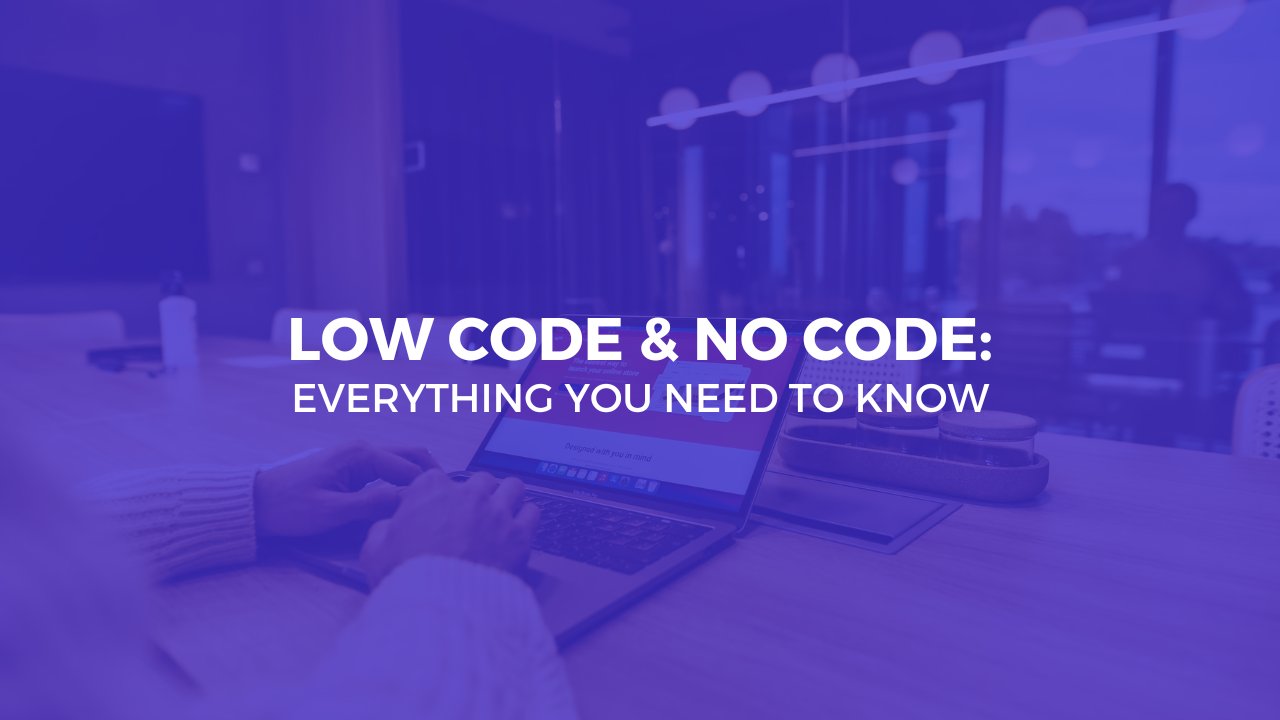What Are Low Code and No Code Platforms?
No code and low code platforms have transformed software development by making application building accessible to a wider audience. Both approaches cater to non-developers but differ in customization, control, and complexity. Here’s a deep dive into each approach to help you understand which best suits your needs.
Understanding No Code Development
No code development allows users to create applications without writing any code, using drag-and-drop tools and pre-built code blocks. This approach is ideal for people without programming knowledge who need to quickly create basic applications.
How No Code Works: Features and Functionality
No code platforms rely on user-friendly interfaces, often with drag-and-drop features and pre-defined templates that streamline the design process.
Benefits of No Code Development
- Accessibility for Non-Technical Users
No code is perfect for entrepreneurs, designers, and others who want to create applications without learning complex programming languages. - Rapid Prototyping and Fast Deployment
These platforms allow rapid prototyping, making them ideal for time-sensitive projects and startups with limited resources. - Cost-Effectiveness for Small Businesses
With no code, businesses can save significantly on development costs, making it an attractive option for budget-conscious entrepreneurs.
Drawbacks of No Code Development
- Limited Customization Options
While no code tools are user-friendly, they often lack the flexibility required for intricate applications. - Reduced Control Over Final Product
Pre-built components can limit customization, which may be unsuitable for users who need specific features.
Low Code Development: Flexibility with Minimal Coding
Low code provides a hybrid solution, blending visual design tools with the option to code for added flexibility. This approach is ideal for more advanced projects that still benefit from streamlined development.
How Low Code Platforms Work
Low code platforms offer drag-and-drop tools similar to no code platforms but include options for developers to manually add code where necessary, allowing for greater flexibility.
Advantages of Low Code Development
- Greater Flexibility for Complex Applications
Low code is suitable for complex applications requiring custom features, often appealing to larger enterprises. - Customization Options for Advanced Users
By allowing some coding, low code platforms provide more control over application design and functionality. - More Control Over Application Design
With low code, users can modify elements and add custom code, which is essential for projects requiring precise functionality.
Potential Drawbacks of Low Code Development
- Higher Costs for Advanced Features
Advanced features and capabilities in low code platforms often come at a premium. - Requires Basic Technical Knowledge
Users need some familiarity with coding to maximize the potential of low code platforms.
Key Differences Between Low Code and No Code Platforms
| Feature | No Code | Low Code |
|---|---|---|
| Technical Knowledge Needed | Minimal or none | Basic knowledge of coding |
| Customization Options | Limited | Extensive |
| Control Over Product | Less control | More control |
| Cost | Generally lower | May be higher, especially with custom features |
Top No Code Platforms for 2024
- Webflow – Popular for web design with customizable templates.
- Bubble – Known for web application building without code.
- Adalo – Allows for mobile app creation.
- Wix – Offers robust website design options.
- Carrd – Ideal for simple, one-page websites.
Top Low Code Platforms for 2024
- OutSystems – A comprehensive platform for enterprise applications.
- Mendix – Known for fast application development with minimal code.
- Appian – Provides strong workflow automation.
- Salesforce AppExchange – A low code platform for building custom Salesforce applications.
- Microsoft PowerApps – Part of the Microsoft suite, ideal for integrations with other Microsoft tools.
FAQ: Low Code vs. No Code
Q1: What’s the difference between low code and no code?
Low code allows minimal coding for flexibility, while no code eliminates coding entirely for simplicity.
Q2: Which is better for beginners: Low code or No code?
No code is ideal for beginners as it requires no technical expertise.
Q3: Can complex applications be built with no code platforms?
No code platforms work best for simple applications; complex applications often require low code.
Q4: Are low code platforms suitable for large enterprises?
Yes, many enterprises use low code for projects requiring customization and scalability.
Q5: How do low code and no code platforms impact traditional developers?
These platforms enable developers to focus on advanced coding tasks, with no code/low code handling simpler builds.
Q6: What are the limitations of using low code/no code platforms?
Customization and control are limited, and costs can increase with advanced features.
